Chicago, IL 60601
FREE CONSULTATIONS 312-462-4200
TOLL FREE 833-462-4200
Recent Blog Posts
Common Health Challenges in Children with Cerebral Palsy
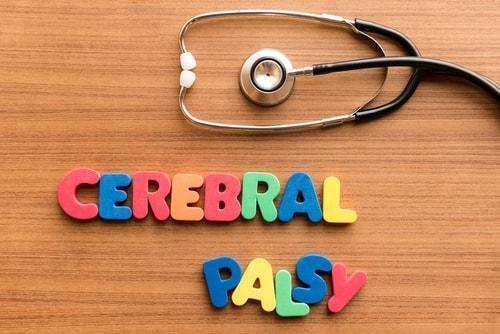 Cerebral palsy is a complex group of disorders caused by brain damage that has a wide variety of symptoms. Usually, the damage that causes cerebral palsy occurs during early development before a child is born. However, sometimes cerebral palsy can result from medical malpractice during birth because of issues like delayed delivery, improper use of assistive tools like forceps, and breech birth. If you recently found out that your child has cerebral palsy, you may want to know more about what this diagnosis might mean for you and your loved one. Here are some of the most common medical issues that children with cerebral palsy may have.
Cerebral palsy is a complex group of disorders caused by brain damage that has a wide variety of symptoms. Usually, the damage that causes cerebral palsy occurs during early development before a child is born. However, sometimes cerebral palsy can result from medical malpractice during birth because of issues like delayed delivery, improper use of assistive tools like forceps, and breech birth. If you recently found out that your child has cerebral palsy, you may want to know more about what this diagnosis might mean for you and your loved one. Here are some of the most common medical issues that children with cerebral palsy may have.
Difficulty Swallowing (Dysphagia)
Dysphagia is difficulty swallowing caused by weakness or dysfunction of muscles involved in the swallowing process. Dysphagia can occur in the back of the throat or lower down in the esophagus. Children with dysphagia often struggle to chew, feel pain when they swallow, or get food stuck in their throat. Dysphagia can be painful for children and frightening for their parents because it can be difficult to diagnose and treat unless it presents with other symptoms. Depending on the severity of the condition, a feeding tube may be necessary to ensure a child gets their nutritional needs met.
Can Mental Health Medication Cause Birth Defects?
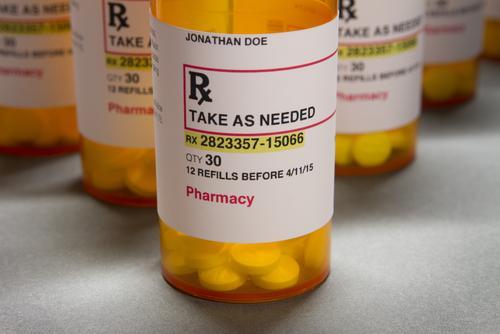 Depression and anxiety are extremely common in Illinois residents, with more people than ever now seeking therapy and medication to treat these disorders. Living with depression and anxiety can be crippling, and finding out you are pregnant can increase your nervousness and worries. Balancing a mother’s health and wellbeing with potential risks to a developing fetus can be tricky, and this is perhaps never more true than when a doctor is giving a pregnant mother medication.
Depression and anxiety are extremely common in Illinois residents, with more people than ever now seeking therapy and medication to treat these disorders. Living with depression and anxiety can be crippling, and finding out you are pregnant can increase your nervousness and worries. Balancing a mother’s health and wellbeing with potential risks to a developing fetus can be tricky, and this is perhaps never more true than when a doctor is giving a pregnant mother medication.
While most medications for depression and anxiety are safe for infants in utero, some medications have side effects that may cause serious harm to a developing baby. Doctors sometimes have to make difficult choices about medication, the mother’s health, and the infant’s risk of developing birth defects. When a doctor is careless or negligent about writing prescriptions for a pregnant mother, they may make medication errors and the effects on a baby can be devastating.
Could My Premature Infant’s Death Be Caused By Medical Malpractice?
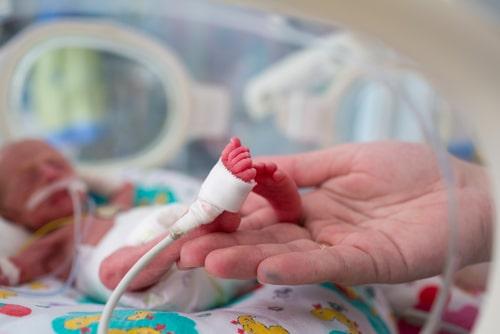 Infants who are born prematurely face a challenging set of health and developmental hurdles that their fully-developed peers do not. Doctors, nurses, and other neonatal care staff must provide the highest standard of care to ensure that prematurely born babies are given the tender care and cautious monitoring that they need during this fragile stage of life. Unfortunately, carelessness or negligent mistakes can contribute to neonatal injuries and death, leaving bereaved parents with an overwhelming feeling of confusion or loss.
Infants who are born prematurely face a challenging set of health and developmental hurdles that their fully-developed peers do not. Doctors, nurses, and other neonatal care staff must provide the highest standard of care to ensure that prematurely born babies are given the tender care and cautious monitoring that they need during this fragile stage of life. Unfortunately, carelessness or negligent mistakes can contribute to neonatal injuries and death, leaving bereaved parents with an overwhelming feeling of confusion or loss.
Negligence and Neonatal Intensive Care
The vulnerability of prematurely born infants naturally exposes them to risks and dangers. Sometimes, even with the best care possible, babies are seriously injured or die. But when doctors and other medical providers make ICU errors, parents may be able to recover damages in a medical malpractice lawsuit. Common examples of neonatal ICU errors include:
Did Getting Poor Healthcare From My Doctor Cause Me to Miscarry?
 Women in Illinois who experience a miscarriage often experience overwhelming grief, trauma, and physical pain. While miscarriage is a fairly common experience, that does not make it any easier if it happens to you or someone you love. Beyond the sadness of the loss of a life that a mother may already feel she knows and loves, miscarriages can also be extremely painful and result in additional physical complications. Although most miscarriages happen naturally, sometimes they occur because of the careless actions of a doctor or hospital. When this happens, parents may wonder whether they can take legal action.
Women in Illinois who experience a miscarriage often experience overwhelming grief, trauma, and physical pain. While miscarriage is a fairly common experience, that does not make it any easier if it happens to you or someone you love. Beyond the sadness of the loss of a life that a mother may already feel she knows and loves, miscarriages can also be extremely painful and result in additional physical complications. Although most miscarriages happen naturally, sometimes they occur because of the careless actions of a doctor or hospital. When this happens, parents may wonder whether they can take legal action.
What Causes Miscarriages?
Miscarriages happen for many reasons, most of which are spontaneous and occur because something has gone wrong in the developmental process. Common causes of miscarriages include, but are not limited to:
- Abnormal fetal development, including genetic problems
Sepsis After Childbirth May Be a Sign of Medical Malpractice
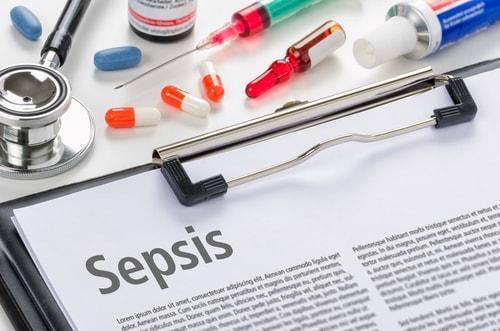 Pregnancy and childbirth are difficult processes that present significant dangers to Illinois women. Certain behaviors from a woman’s obstetric healthcare providers, such as negligence or malpractice, can seriously compound these dangers to the point that women may suffer from life-threatening injuries and maternal mortality.
Pregnancy and childbirth are difficult processes that present significant dangers to Illinois women. Certain behaviors from a woman’s obstetric healthcare providers, such as negligence or malpractice, can seriously compound these dangers to the point that women may suffer from life-threatening injuries and maternal mortality.
One leading cause of maternal mortality is that of maternal sepsis - a dangerous infection that generally begins in a woman’s uterus and triggers a full-body immune response system severe enough to injure organs and other bodily tissues. While sepsis is generally more dangerous to women who already suffer from other health issues, it can injure and kill healthy women as well. If a woman you love has been injured or killed by sepsis after childbirth because of medical malpractice, you may want to meet with an experienced Illinois maternal mortality attorney.
My Wife Suffered an Amniotic Fluid Embolism During Childbirth. Can I Sue Her Doctor?
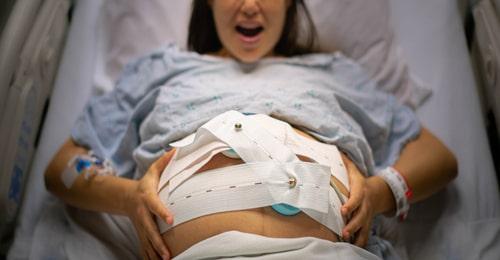 The birth of a child is a wonderful experience for most parents, but it comes with significant risks and dangers to mothers. Maternal mortality in the United States is significantly higher than other developed nations with comparable health systems, and neglectful or careless acts on the part of healthcare providers can seriously endanger the health and even the life of a mother before, during, and after childbirth.
The birth of a child is a wonderful experience for most parents, but it comes with significant risks and dangers to mothers. Maternal mortality in the United States is significantly higher than other developed nations with comparable health systems, and neglectful or careless acts on the part of healthcare providers can seriously endanger the health and even the life of a mother before, during, and after childbirth.
One rare but potentially lethal risk to Illinois mothers during childbirth is that of an amniotic fluid embolism. An amniotic fluid embolism occurs when the amniotic fluid surrounding a baby in the mother’s uterus gets into the mother’s bloodstream. It can be difficult to know whether an amniotic fluid embolism has occurred and doctors must be on the alert for signs of a potential embolism so treatment can be secured immediately. If a doctor misses obvious signs of an amniotic fluid embolism or fails to order effective treatment, the mother can suffer serious health complications, including death. If your wife or partner was injured or died from this condition, you may want to meet with an experienced Illinois maternal mortality lawyer.
Periventricular Leukomalacia - What Is It, and How Does It Happen During Childbirth?
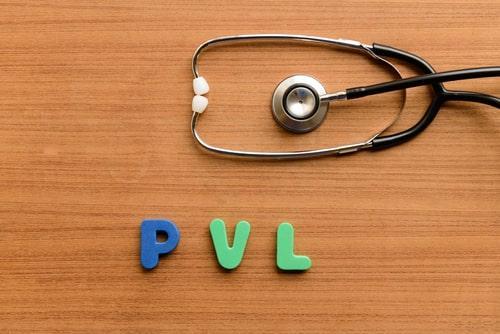 While the birth of a child is typically a joyous event for parents, it carries serious risks to both an infant and her mother. One rare but potentially debilitating risk is periventricular leukomalacia, or PVL, which can occur when brain tissue is injured or dies. While the cause of PVL can be difficult to determine, a lack of blood flow to the brain during childbirth is clearly linked to PVL and PVL is much more common in preterm infants.
While the birth of a child is typically a joyous event for parents, it carries serious risks to both an infant and her mother. One rare but potentially debilitating risk is periventricular leukomalacia, or PVL, which can occur when brain tissue is injured or dies. While the cause of PVL can be difficult to determine, a lack of blood flow to the brain during childbirth is clearly linked to PVL and PVL is much more common in preterm infants.
Doctors and nurses in Illinois who are delivering an infant or caring for a pregnant mother must be aware of any risks that could contribute to the development of PVL. If your infant has suffered from periventricular leukomalacia, you may want the help of an experienced Illinois birth injuries attorney.
What is Periventricular Leukomalacia?
PVL is when damage occurs to the white brain tissue near fluid-filled chambers in the brain known as ventricles. White matter in the brain acts as an agent of communication between nerve cells, the spinal cord, and different parts of the brain. Damaged white matter can cause growth and motor function issues in young children, including cerebral palsy and learning disorders.
Could My Infant’s Spine Have Been Damaged at Birth?
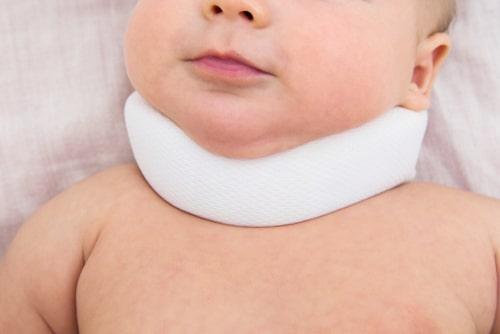 Every day, parents in Illinois experience the joy of welcoming their newborn into their arms. For some parents, however, what should be an exciting experience turns into a nightmare when a delivery becomes complicated and an infant suffers severe injuries or death. Spinal cord injuries during childbirth are rare, but they have life-threatening consequences for babies who suffer from them. A lifetime of intensive medical care may be necessary, and your child may never be able to live independently. If your infant suffered from an avoidable spinal cord injury during childbirth because of negligent medical care, consider getting help from an Illinois birth injury lawyer.
Every day, parents in Illinois experience the joy of welcoming their newborn into their arms. For some parents, however, what should be an exciting experience turns into a nightmare when a delivery becomes complicated and an infant suffers severe injuries or death. Spinal cord injuries during childbirth are rare, but they have life-threatening consequences for babies who suffer from them. A lifetime of intensive medical care may be necessary, and your child may never be able to live independently. If your infant suffered from an avoidable spinal cord injury during childbirth because of negligent medical care, consider getting help from an Illinois birth injury lawyer.
Neonatal Spinal Cord Injuries
While spinal cord injuries do not happen often, when they do happen, they nearly always have catastrophic consequences. Right away, doctors and parents may notice an alarming lack of movement, loss of reflexes, breathing issues, and no response to painful stimuli. Many infants who suffer from spinal cord injuries ultimately pass away, and those who live generally have long-term consequences that include:
Was my Child’s Cerebral Palsy Caused by Medical Malpractice at Birth?
 Cerebral palsy is a complex group of neural disorders that can cause weakness or damage to the development and function of someone’s brain and how it communicates with his or her muscles. Different people exhibit different symptoms of cerebral palsy, and the effects can range from mild difficulties when walking to permanently debilitating intellectual or physical conditions that require full-time care.
Cerebral palsy is a complex group of neural disorders that can cause weakness or damage to the development and function of someone’s brain and how it communicates with his or her muscles. Different people exhibit different symptoms of cerebral palsy, and the effects can range from mild difficulties when walking to permanently debilitating intellectual or physical conditions that require full-time care.
Cerebral palsy can be caused by many factors before, during, and after birth when a child’s brain is rapidly developing. Most cases of cerebral palsy are thought to be congenital, meaning they develop through no fault of the child’s parents or healthcare providers. In some cases, however, poor medical treatment during childbirth can cause birth injuries that cause cerebral palsy. If you are worried that your child has suffered brain damage because of the negligent or careless actions of your provider, read on.
Can I Do Anything if My Chicago OB-GYN Failed to Diagnose My Preeclampsia?
 Pregnant women in Illinois are at an increased risk of many injuries and diseases. Every year, around 700 women in the United States die as a result of pregnancy or childbirth, and experts estimate well over half of these deaths could be prevented with proper medical care.
Pregnant women in Illinois are at an increased risk of many injuries and diseases. Every year, around 700 women in the United States die as a result of pregnancy or childbirth, and experts estimate well over half of these deaths could be prevented with proper medical care.
Preeclampsia is a particularly dangerous condition that tends to happen later in pregnancy. Left undiagnosed and untreated, preeclampsia can cause serious complications and birth injuries that can be fatal for a mother and her child. It is crucial for maternal medical caregivers to recognize signs of preeclampsia early and monitor patients very carefully. When an Illinois doctor fails to diagnose preeclampsia and the mother or child suffers, it may be possible to successfully claim damages in a medical malpractice lawsuit.
Understanding the Risks of Preeclampsia
Preeclampsia is a medical condition characterized by high blood pressure coupled with abnormally high protein levels in urine and swelling throughout the body. Usually, preeclampsia does not appear until after 20 weeks, although it can come earlier than that and, rarely, even after delivery. Preeclampsia is thought to happen when new blood vessels responsible for nourishing the infant during pregnancy do not develop correctly. They do not allow enough blood to flow through them, causing high blood pressure throughout the rest of the mother’s body.





